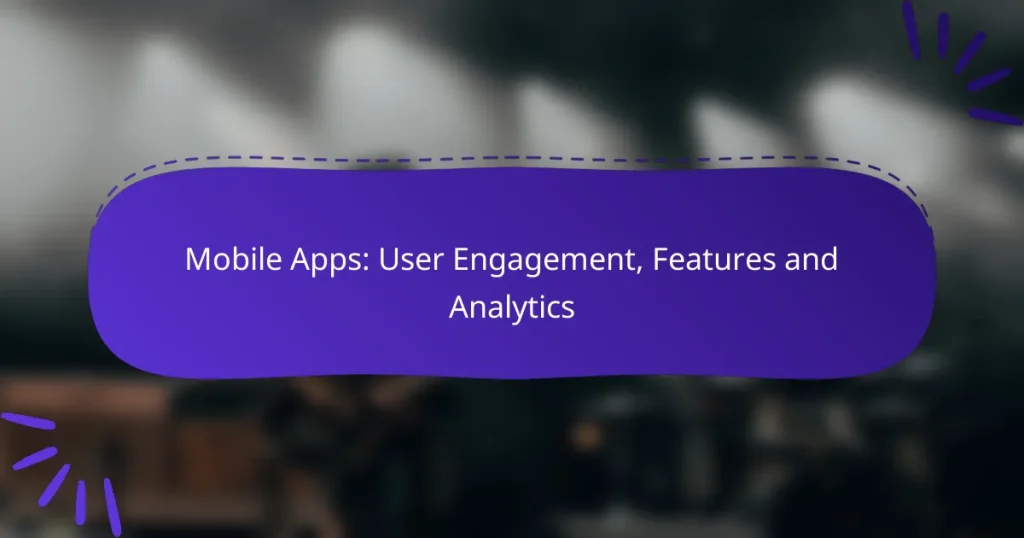Digital engagement platforms are essential tools for e-commerce businesses, enhancing customer interactions and optimizing sales processes. By offering tailored communication and insightful data analysis, these platforms foster deeper connections between brands and their customers, ultimately driving satisfaction and loyalty.
Mobile Apps: User Engagement, Features and Analytics
Virtual Reality: Immersive Experiences, Fan Engagement and Technology Integration
What are the best digital engagement platforms for e-commerce?
The best digital engagement platforms for e-commerce enhance customer interaction and streamline sales processes. Key options include Shopify, HubSpot, Salesforce, Zendesk, and Mailchimp, each offering unique features tailored to different business needs.
Shopify
Shopify is a leading e-commerce platform that enables businesses to create online stores quickly. It offers a user-friendly interface, customizable templates, and a wide range of apps to enhance functionality.
Consider Shopify if you need an all-in-one solution for selling products online. It supports various payment options and integrates with social media platforms, making it easier to reach customers where they are.
HubSpot
HubSpot is a comprehensive marketing, sales, and service platform that helps e-commerce businesses manage customer relationships effectively. Its CRM features allow for personalized marketing campaigns and customer engagement tracking.
Utilize HubSpot if you aim to improve your inbound marketing strategy. Its tools for email marketing, social media management, and analytics can drive traffic and increase conversions.
Salesforce
Salesforce is a robust CRM platform that offers extensive features for e-commerce businesses. It provides tools for sales automation, customer service, and marketing analytics, helping companies understand customer behavior.
Choose Salesforce if you require advanced customization and scalability. It is particularly beneficial for larger businesses that need to manage complex customer interactions and data across multiple channels.
Zendesk
Zendesk is a customer service platform that focuses on enhancing customer support for e-commerce businesses. It offers ticketing systems, live chat, and self-service options to improve customer satisfaction.
Implement Zendesk if you want to streamline your customer support processes. Its integration with various e-commerce platforms allows for seamless communication and issue resolution.
Mailchimp
Mailchimp is primarily known for its email marketing capabilities but also offers tools for audience management and marketing automation. It helps e-commerce businesses engage with customers through targeted email campaigns.
Use Mailchimp if your focus is on building and nurturing customer relationships through email. Its analytics can help you track campaign performance and optimize for better results.
How do digital engagement platforms enhance customer experience?
Digital engagement platforms improve customer experience by providing tailored interactions, timely communication, and insightful data analysis. These tools facilitate a deeper connection between businesses and their customers, ultimately leading to increased satisfaction and loyalty.
Personalized marketing
Personalized marketing allows businesses to tailor their messages and offers based on individual customer preferences and behaviors. By leveraging customer data, companies can create targeted campaigns that resonate more effectively, leading to higher engagement rates.
For example, a retail brand might use purchase history to recommend products that align with a customer’s interests. This approach not only enhances the shopping experience but also increases the likelihood of conversion.
Real-time communication
Real-time communication enables businesses to interact with customers instantly, addressing inquiries and concerns as they arise. This immediacy fosters a sense of responsiveness and care, which can significantly enhance customer satisfaction.
Utilizing chatbots or live chat features on websites allows customers to receive support without delay. For instance, if a customer has a question about an order, they can get answers within minutes, improving their overall experience.
Data analytics
Data analytics plays a crucial role in understanding customer behavior and preferences. By analyzing data collected from various touchpoints, businesses can identify trends and insights that inform their strategies.
For example, tracking customer interactions can reveal peak engagement times or popular products, allowing companies to optimize their marketing efforts. Implementing tools that provide comprehensive analytics can lead to more informed decision-making and improved customer experiences.
What features should you look for in a digital engagement platform?
When selecting a digital engagement platform, prioritize features that enhance user interaction and streamline communication. Key aspects include integration capabilities, user-friendly interfaces, and automation tools that collectively improve engagement efficiency.
Integration capabilities
Integration capabilities are crucial for ensuring that your digital engagement platform can work seamlessly with existing tools and systems. Look for platforms that support popular CRM, email marketing, and social media applications to create a cohesive digital ecosystem.
Consider platforms that offer APIs or pre-built connectors, which simplify the integration process. This can save time and reduce the need for extensive technical resources, allowing for quicker implementation and better data synchronization.
User-friendly interface
A user-friendly interface is essential for maximizing user adoption and engagement. The platform should have an intuitive design that allows users to navigate easily without extensive training.
Evaluate the layout, accessibility features, and customization options. A clean, visually appealing interface can significantly enhance user experience and encourage more frequent interactions with the platform.
Automation tools
Automation tools can significantly enhance the efficiency of your digital engagement efforts. Look for features that allow you to automate repetitive tasks, such as sending follow-up emails or scheduling social media posts, which can free up time for more strategic activities.
Consider platforms that offer customizable workflows and triggers based on user behavior. This allows for timely and relevant communication, improving overall engagement and satisfaction rates.
How do digital engagement platforms compare in pricing?
Digital engagement platforms vary significantly in pricing based on features, user capacity, and subscription models. Understanding these differences is crucial for businesses to select a platform that fits their budget and needs.
Shopify pricing tiers
Shopify offers several pricing tiers that cater to different business sizes and requirements. The basic plan typically starts around $29 per month, while more advanced plans can go up to $299 per month or more, depending on features like reporting and shipping discounts.
When choosing a Shopify plan, consider your sales volume and the specific tools you need. For example, larger businesses may benefit from the Advanced plan, which includes more robust analytics and lower transaction fees.
HubSpot subscription costs
HubSpot’s pricing is structured around its various hubs, including Marketing, Sales, and Service. The costs can range from free for basic features to several hundred dollars per month for premium features and higher tiers.
It’s essential to evaluate which HubSpot tools are necessary for your operations. Many businesses start with the free version and upgrade as their needs grow, especially when they require advanced marketing automation or CRM capabilities.
Salesforce pricing models
Salesforce employs a subscription-based pricing model with various editions, starting from around $25 per user per month for the Essentials edition to over $300 per user per month for the more comprehensive Enterprise edition.
When selecting a Salesforce plan, consider the scale of your operations and the specific functionalities you require. Salesforce’s flexibility allows for customization, but this can also lead to increased costs if additional features or integrations are needed.
What are the benefits of using digital engagement platforms?
Digital engagement platforms enhance communication between businesses and their customers, leading to improved relationships and outcomes. They offer tools that streamline interactions, personalize experiences, and ultimately drive better business performance.
Increased customer retention
Digital engagement platforms play a crucial role in boosting customer retention by fostering ongoing communication and personalized experiences. By utilizing data analytics, businesses can tailor their offerings and messages to meet individual customer needs, making them feel valued and understood.
For example, companies can implement loyalty programs or targeted email campaigns that reward repeat customers. This approach can lead to retention rates improving by significant margins, often in the range of 10-30% depending on the industry.
Improved sales conversion
Using digital engagement platforms can significantly enhance sales conversion rates by providing timely and relevant interactions with potential customers. These platforms enable businesses to engage with prospects at various touchpoints, guiding them through the sales funnel effectively.
For instance, chatbots can assist visitors on a website in real-time, answering questions and addressing concerns, which can lead to higher conversion rates. Businesses often see conversion improvements of 20-50% when leveraging these tools effectively.
What are the challenges of implementing digital engagement platforms?
Implementing digital engagement platforms can be complex due to various challenges, including integration with existing systems, user adoption, and data privacy concerns. Organizations must navigate these hurdles to ensure a seamless transition and effective use of the platform.
Integration with existing systems
Integrating digital engagement platforms with existing systems is often one of the most significant challenges. Organizations typically use multiple software solutions, and ensuring that these systems communicate effectively can require substantial technical effort and resources.
Key considerations include compatibility with current software, data migration processes, and the potential need for custom APIs. A successful integration often involves thorough planning and testing to minimize disruptions during the transition.
To streamline integration, organizations should prioritize platforms that offer robust support for existing technologies and consider phased rollouts. This approach allows for gradual adjustments and reduces the risk of overwhelming users with sudden changes.


